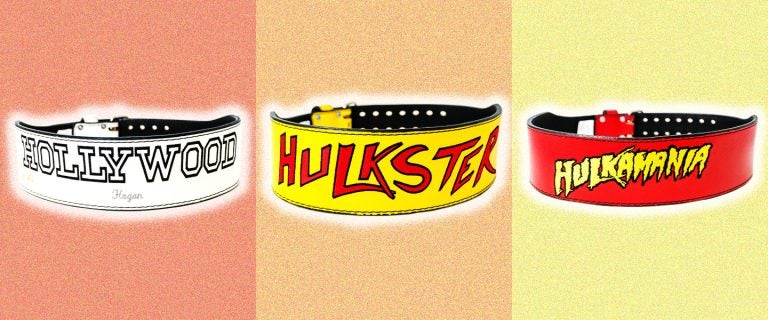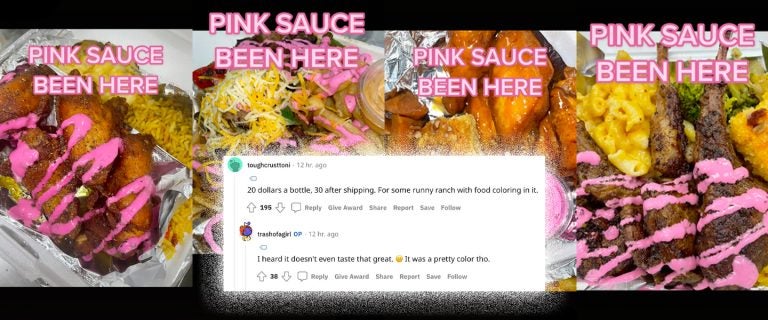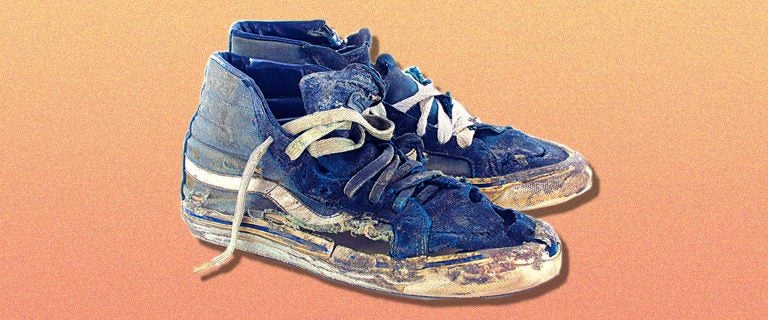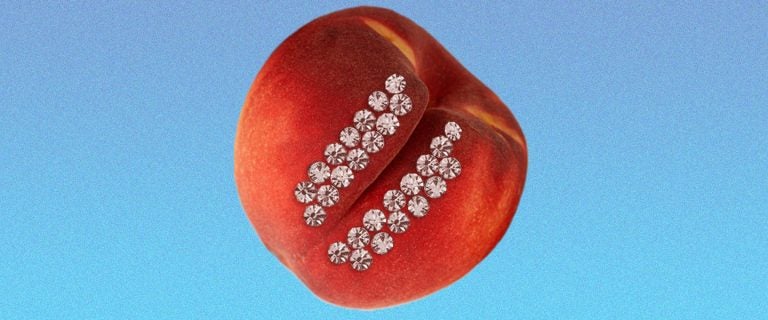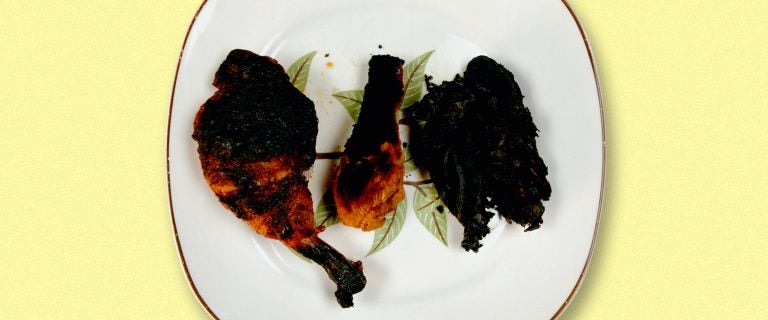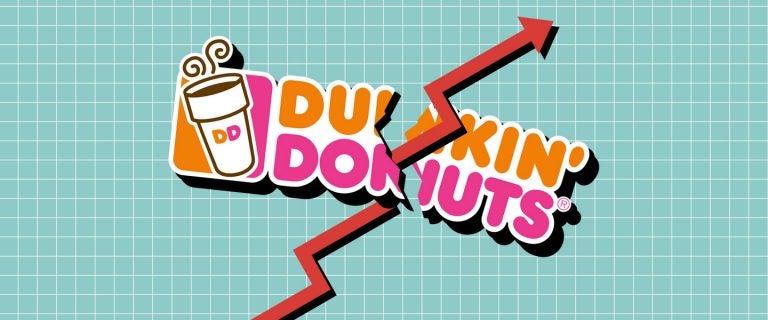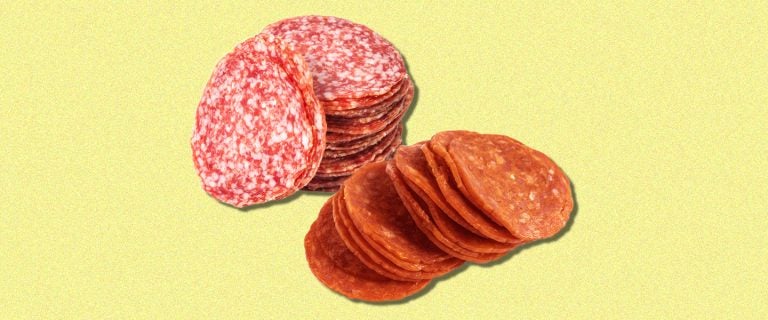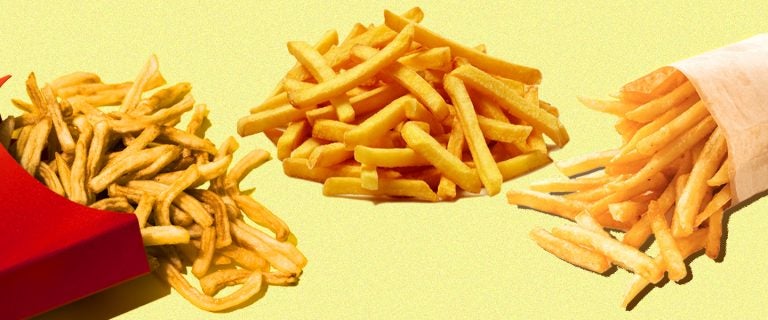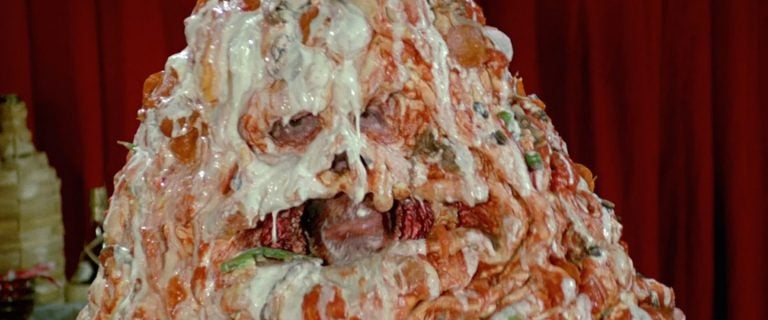Tesla Is Changing How Men Are Jerks Behind the Wheel
New research explains how the automaker exploits and influences drivers’ masculinity
Clint Duncan spent his quarantine growing out what has become the most glorious mullet in the country. It’s also done nothing but change his life for the better
TikTok isn’t kind to housewives, but househusbands are overwhelmed with compliments and adoration. Is their domestic glee really about ‘ending the patriarchy,’ or is there something else at play?
‘My Old School’ documentarian Jono McLeod discusses being an eyewitness to one of Scotland’s greatest hoaxes — and why he made a film about the odd not-so-young man everybody in his class thought was a kid named Brandon Lee
They’re the perfect mix of authority and untouchability. They’re effortlessly tan. And they will forever be your unrequited love
No matter the heights the Hulkster’s soared or the depths he sunk, one thing was always at his literal side — his trusty leather weightlifting belt
When a young man bragged on an incel forum that he had gone to Thailand and had sex with many women, the reaction sparked a debate over whether the poster was a blackpilled folk hero, or a fakecel desperate for attention from other lonely men
They thought it would be the ticket to a better life, instead the crypto crash has left them in financial ruin
POPULAR
- Determining the ABV of the Most Beloved Cartoon Beers
- My Night at the Metaverse’s Seediest Strip Clubs
- The Beta Men Who Gleefully Do Women’s Homework for Free
- The Internet Sleuths Obsessively Tracking the Superyachts of Russian Oligarchs
- My Very Romantic, Totally Normal ‘American Psycho’ Dinner for Two
It seems like every bar these days claims to have a ‘beer garden,’ but a few lawn chairs and plastic cups won’t fool me
Porn used to be a mostly visual medium, but the rise of captions that go along with it have allowed people to project their filthiest fantasies onto almost anything
Between TikTok’s ‘Pink Sauce’ drama and Daily Harvest’s poisonous lentils, maybe it’s best to stick to the supermarket
‘I have no doubt that President Trump and Fox News have caused people to die.’ This is what it’s like to lose your dad twice — first to Rush Limbaugh, then to the ICU as he battles a disease he believes is a hoax
What happens to young men when they quit the modeling industry? While some exit the business gracefully, others take a nose dive, only to find salvation at the Cheesecake Factory
Throughout the 1980s and 1990s, Action Park — unofficially known as Class Action Park, Traction Park and Accident Park — was ‘Lord of the Flies’ with a Jersey twist and a higher death count
Today, they’re either tourist traps or the backdrop for weddings. But like Auschwitz and the sites of other concentration camps in Europe, they need to serve a much bigger purpose — making sure that America never forgets the horror of slavery.
Young Thug is the latest example of how prosecutors are using rappers’ lyrics as criminal evidence against them in courtrooms across America. The tactic, which is not used with any other art forms or types of music, is a clear case of a racist legal system
Anyone harassing Black actors for joining the franchise is in desperate need of an actual life
The more time you spend in them, they don’t just grow more comfortable, but they reflect all of the places you’ve been
With ‘The Rehearsal,’ the comedian continues his awesome experiments in style
When it comes to weird 2010s trends, little can compare to the perplexing, dazzling art of vajazzling. But how, exactly, did we become so taken with this resplendent pubic decor?
Unlike their MGTOW counterparts, they never devolved into a hate forum — and some of them are thriving
MGTOWs, MRAs and even some incels are against overturning abortion rights
Iman Rashid was shot to death in Jordan yesterday. Just days earlier, Nayera Ashraf was killed in Egypt by a man whose advances she had rejected. Both instances have caused an uproar over misogynist violence in the region — but such killings aren’t unique to one culture or place
Greta Gerwig and Christopher Nolan will both be putting out highly anticipated movies on July 21, 2023. Already, fans aren’t just debating what film they’re more excited to see — they’re arguing over which kind of film is more worthwhile. It’s the latest salvo in an ongoing, exhausting discourse wrapped up in assumptions about gender and art
Jordan Peele, the man who gave us ‘Get Out,’ continues to use horror as a means to talk about how everyday American life is frightening enough — even when extraterrestrials may be coming for a visit
The ironically idiotic catchphrase has become a shorthand for a movie, about ready to celebrate its 35th anniversary, that satirizes our distracted, dumbed-down, consumerist society
At last weekend’s L.A. Pride, the singer wore a honkin’ green sparkly dong during her performance, quite literally rocking out with her cock out
The coordinated Instagram posts were part of a broader anti-LGBTQ effort to ‘reclaim the rainbow’
An uptick in people identifying as queer or trans has doubters claiming ‘social contagion’
As Roe falls, pregnant people are wrangling with the threat of health-care professionals turning them over to the authorities for seeking an abortion
It’s not you. A new study says that it’s the sun that makes you want that second hamburger, fourth hog dog and sixth bag of chips
How could I ever get sick if I’ve annihilated every last piece of bacteria?
Unhinged ‘Transvestigators’ Think They’re the Only Cis People Left
Once you buy into their hateful conspiracy theory, you’ll turn against anyone
We’re not using your old Nike socks like a new meme implies, but yeah, every now and then, we freshen up with whatever soap you’ve got lying around. And if it makes us smell like pomegranate Dial, so be it
While a majority of single women wash their sheets every two weeks, most single men say theirs hit the laundry every four months. What is going on here?
A new study found that the quality of advice doesn’t matter nearly as much to recipients as the quantity of it
Not everyone who received pandemic relief through the Paycheck Protection Program was planning to keep businesses afloat through an unprecedented time. Instead, some defrauded the government out of millions and blew it on Lamborghinis and Rolexes
The connection between COVID and testosterone has been all over the map since the pandemic began. But a new study may have found some promising answers
‘I’m an introvert to my core and I love the superpower the mask gives me to feel invisible’
Now that ‘Top Gun: Maverick’ has joined this exclusive list of mega-moneymakers, we crunch the numbers to figure out what it takes for your movie to be a true blockbuster. (Hint: It helps to have Iron Man in it.)
Dunkin’ used to be the only place you could get a meal for $5, but now you’re lucky if your coffee alone costs less than seven bucks
According to Stanford neuroscientist Andrew Huberman, one of the best things we can do for our mental health is to go outside and catch a few rays when we first wake up
Scientists suspect that caffeine can boost your cognitive performance and improve tactical decision-making. But unfortunately, the sweet spot may not allow for as much cold brew as you’d hoped
Many people unconsciously cope with stress by exhausting themselves to the point of not caring, but therapists warn that this is far from a sustainable solution
POPULAR
- How Women Really Want You to Cum, According to Science
- Fact-Checking the Gluck Gluck 9000, the So-Called Perfect Blow-Job Technique
- The Legend of Horst Schultz, the World’s Most Famous Long-Distance Ejaculator
- Cum Again: Why Can’t Men Have Multiple Orgasms?
- The 50,000 Men Obsessed With ‘That True Detective Scene With Alexandra Daddario’
The Outlaws of Grailed
These resellers have gotten banned from the app for everything from trying to circumvent fees to knowingly peddling knockoffs
Just because they’re both delicious logs of meat doesn’t mean they’re not special in their own right
Healthy, of course, is a relative term here, but there is one golden, delicious and micronutrient-deficient fry that stands above all the rest
This week, a popsicle truck set up shop in New York and L.A., offering up the frosty heads of billionaires like Elon Musk, Jeff Bezos and Mark Zuckerberg. I happily chowed down on all of them
In 1979, a sheriff’s deputy in rural Minnesota encountered what he could only describe as an unidentified flying object. And no expert, investigator or engineer could ever prove him wrong
A 51-year-old Nigerian man convinced numerous widows throughout the U.S. that he was an American general who needed their money to help get him out of the Middle East — and into their arms
The documentarian talks about what she wanted to avoid while making her hit Netflix series, the strange anti-charisma of this polygamous cult leader and why the future of FLDS should make everyone nervous
Before ‘Seinfeld,’ there was no English word to describe what happens to your junk in cold air and water. But after it first appeared in a 1994 episode, the world couldn’t get enough of that frightened turtle
The makeup effects artist who designed the revolting mob boss from the 1987 Mel Brooks classic, and the guy beneath all those pizza toppings reveal every disgusting trick that went into creating an edible, intergalactic supervillain
‘Seinfeld’ writers reflect on the elderly fitness king, one of the greatest characters on the show and the final television role of the iconic Lloyd Bridges





